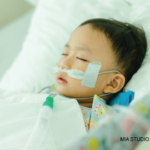 On July 15, the U.S. Food & Drug Administration (FDA) approved a 10% solution of a human intravenous immunoglobulin (IVIG), Octagam 10%, to treat adults with dermatomyositis, a rare chronic systemic autoimmune disease with a characteristic skin rash and progressive proximal muscle weakness.1,2 This treatment was previously FDA approved to treat chronic immune thrombocytopenic purpura.3
On July 15, the U.S. Food & Drug Administration (FDA) approved a 10% solution of a human intravenous immunoglobulin (IVIG), Octagam 10%, to treat adults with dermatomyositis, a rare chronic systemic autoimmune disease with a characteristic skin rash and progressive proximal muscle weakness.1,2 This treatment was previously FDA approved to treat chronic immune thrombocytopenic purpura.3
The current FDA approval was based on results of the international, multi-center study Progress in Dermatomyositis (ProDERM) study. Data from this phase 3, randomized, double-blind, placebo-controlled trial were presented during the 2021 virtual EULAR Congress, June 2–5, by Rohit Aggarwal, MD, MS, associate professor of medicine at the University of Pittsburgh, medical director of the Arthritis and Autoimmunity Center and co-director of the Myositis Center.4 The goal of the study (NCT02728752) was to evaluate the safety, tolerability and efficacy of IVIG in dermatomyositis patients.5
The study’s primary endpoint was the proportion of patients who responded to IVIG treatment compared with the proportion of patients who responded to placebo at week 16. Per the 2016 ACR/EULAR myositis response criteria, response was defined as a minimal improvement in total improvement score (TIS) of at least 20 points and no clinical worsening at two consecutive visits up to week 16.
The first part of the study lasted for 16 weeks. It was the double-blind, placebo-controlled period during which adult patients with definite or probable dermatomyositis were randomized 1:1 to receive either high-dose IVIG (2 g/kg of body weight) every four weeks or placebo.
In the second part of the study, patients treated with placebo and patients who did not have clinical worsening while receiving IVIG entered a 24-week, open-label extension period. These patients received 2 g/kg of body weight of IVIG every four weeks. Patients who were stable at week 28 could have their dose reduced to 1 g/kg of body weight every four weeks. Patients with clinical worsening at two consecutive visits between weeks 8 and 16 were switched to the alternate treatment arm.
The Results
A total of 95 adults with a mean age of 53 years were enrolled in ProDERM. The patients were predominantly white (92%) women (75%). Their baseline clinical characteristics, including medical history and prior dermatomyositis treatment, were well balanced between the IVIG treatment group (n=47) and the placebo group (n=48).
At week 16, the primary study endpoint was met, with 78.7% of IVIG-treated patients responding to treatment compared with 43.8% of placebo-treated patients. This difference of 34.9% was considered significant (95% confidence interval [CI] 16.70–53.24; P=0.0008).


